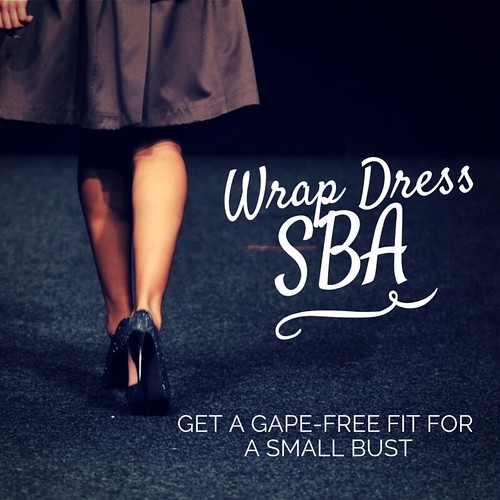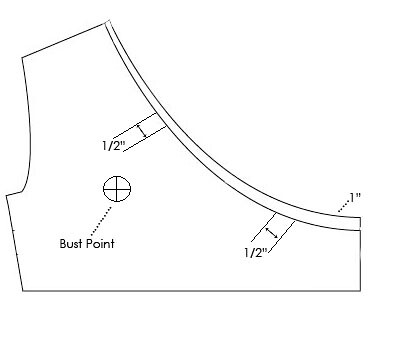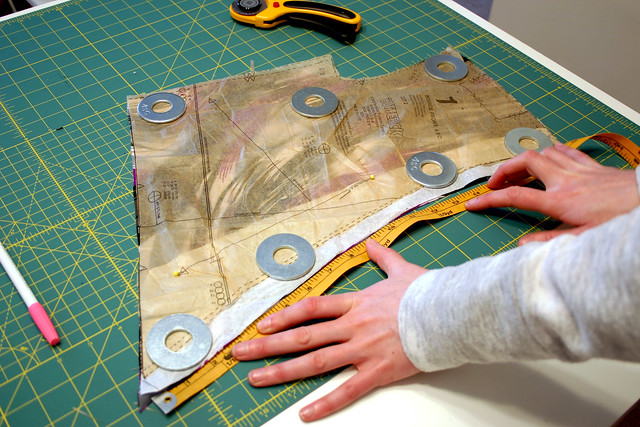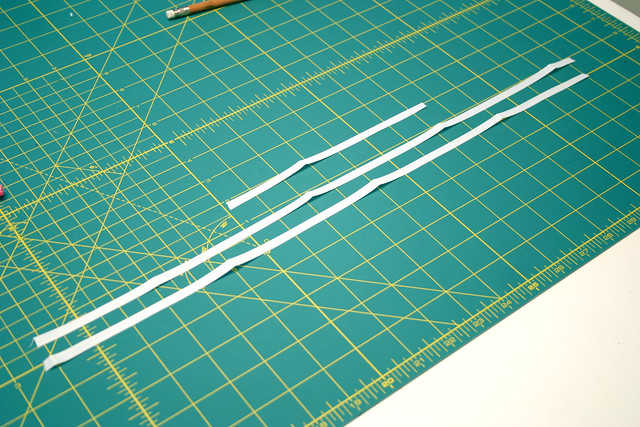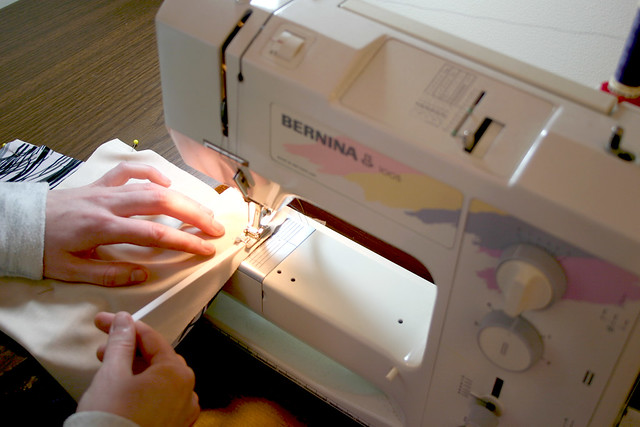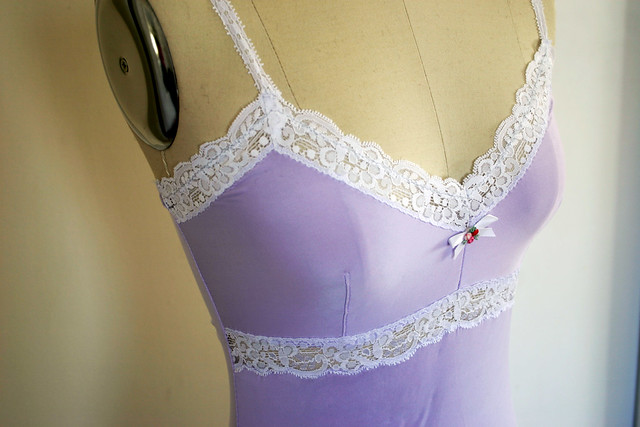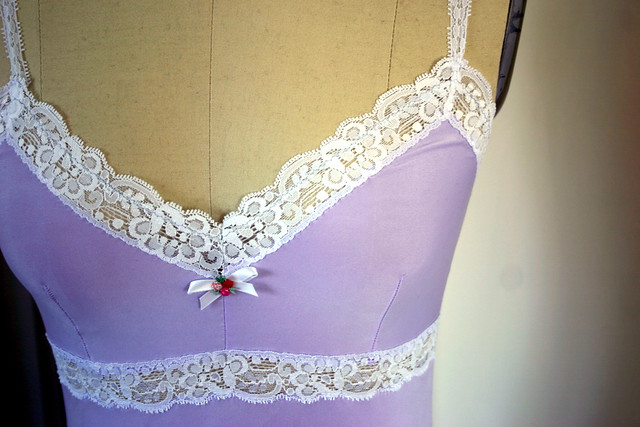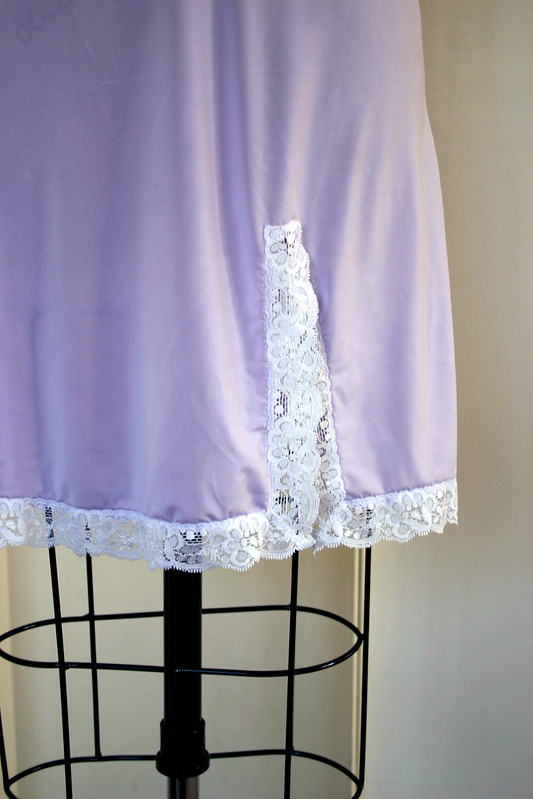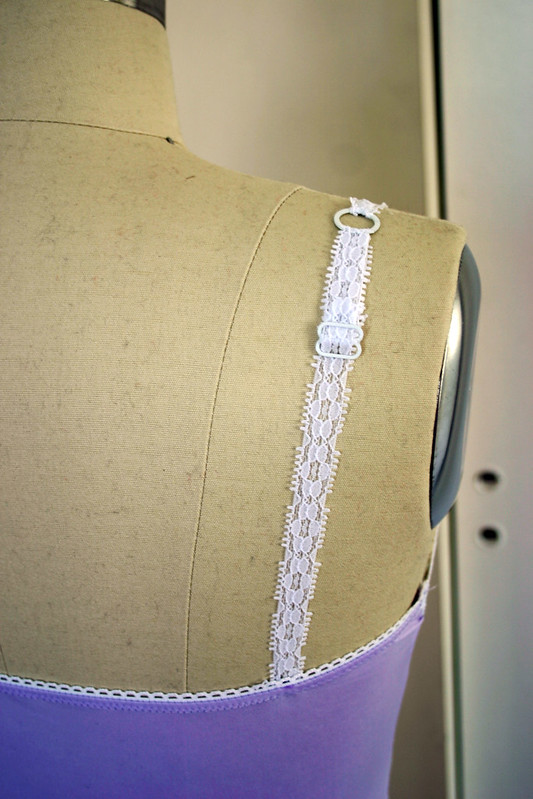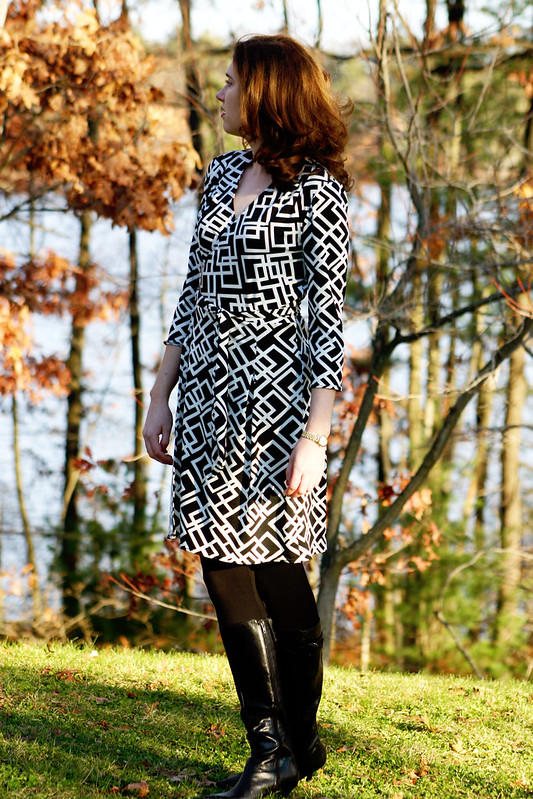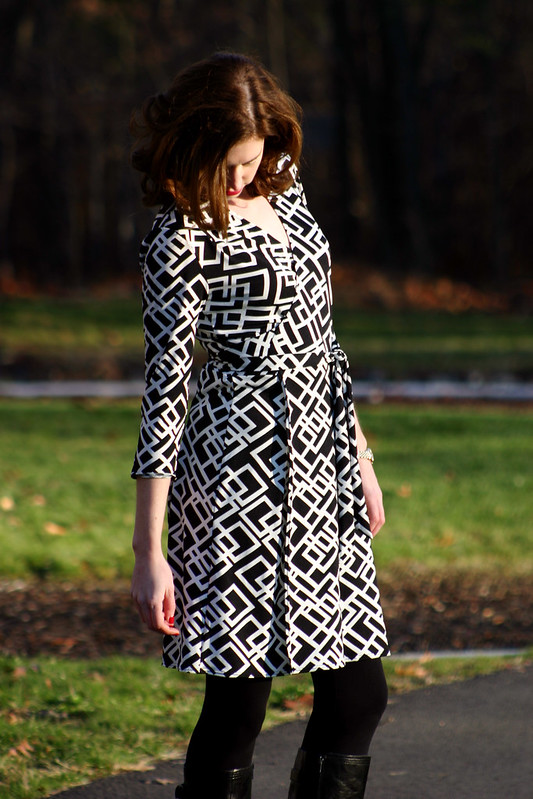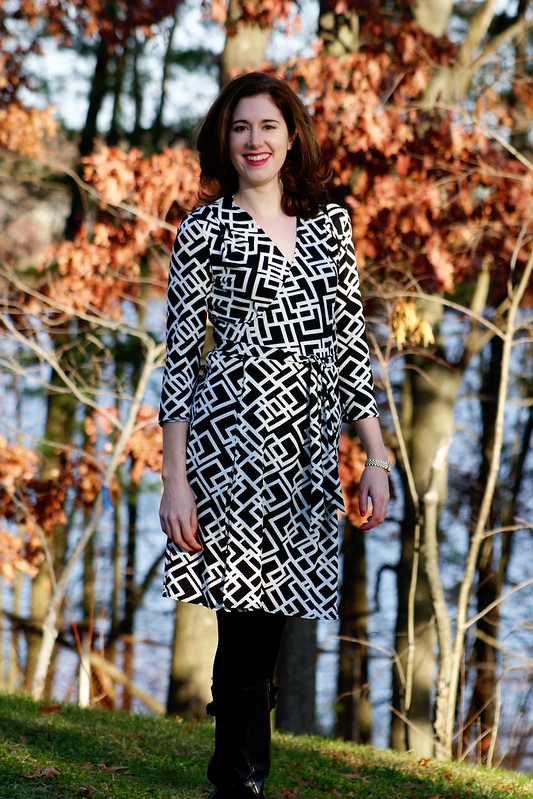
I mentioned in my last post how limited my sewing time is now that I’m going to grad school part-time. To illustrate how slow I am: I started planning this jacket at the end of August, bought the fabric in September, started sewing in October, and didn’t finish until November. Part of that is, like I mentioned, because of starting school, but the other part is that I needed to redraft the sleeves. You see, this is a complete knock-off of the jacket featured on the cover of Thread’s November 2016 magazine!

The fabric I used is exactly what was stated in the article – a double-face cotton serge twill from Mood Fabrics. I searched the site and ordered a swatch – it’s such a nice weight, perfect for a fall jacket, and has nice stretch and recovery. It does wrinkle a bit as you wear it, especially in the sleeves, but that’s what happens when we wear cotton I guess!
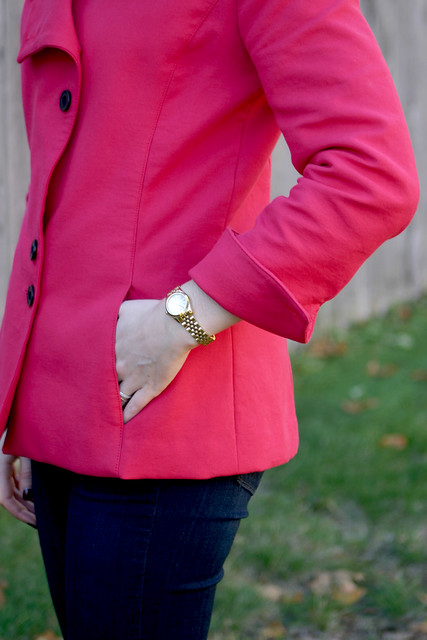
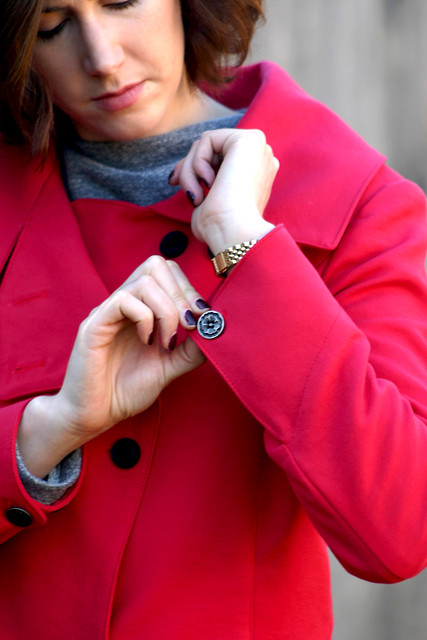
The pattern itself was pretty straightforward, but redrafting the sleeve and adding the cuff made the pattern a little more challenging. My stitching isn’t perfect and I ended up getting a small tuck when I attached the cuff, maybe I was off with some of my drafting. And oh boy, the top stitching on this! Definitely something I need to work on and take my time doing.
I also had a bit of hard time with the button placement. When I tissue-fit the jacket, I thought it was going to fit just right (my standard grading out of a size 10 to a size 12 from waist to hips). Once I sewed it together, I realized it was too big and needed to take it in. Then, when I marked the button hole placement, the fit was still off. So, I improvised with the button placement and made it work with how I wanted the jacket to fit overall. I also wasn’t that crazy about the buttons I used, they’re pretty boring and not as fun and fancy as the buttons on the original jacket. The selection at my local Joann Fabrics is so limiting! Maybe I’ll order some buttons online from Pacific Trimming and swap them out for these boring black ones.
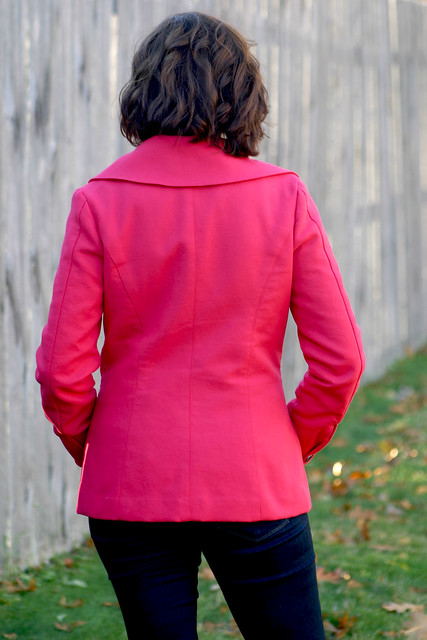
I used a new-to-me interfacing from Fashion Sewing Supply – I read so many good things about their interfacing from other sewing bloggers, and since I couldn’t find any more of my Touch of Gold interfacing that I love, I ordered some medium weight fusible. I didn’t completely read the instructions though, and the bond of the interfacing to the jacket isn’t 100% as you can kind of see in the photos above. Oh well! Definitely a user-error, I used it correctly for another upcoming project and it looks much better.
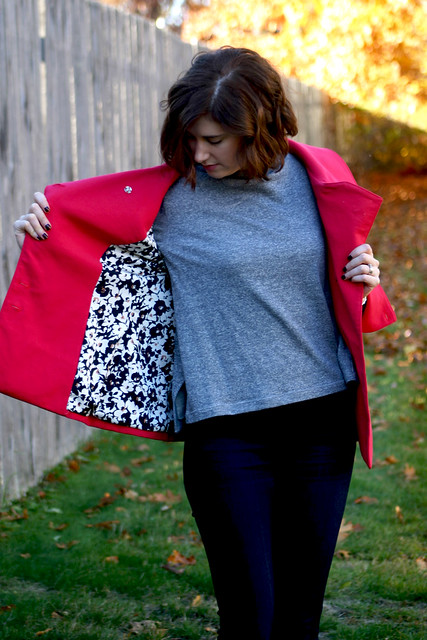
Jackets and coats are so much more fun when there’s a surprise “pop” with the inside lining! I just love this floral poly fabric from Mood.
Would I make this pattern again? Maybe in a wool tweed, but I have so many other jacket and coat patterns on the brain I want to sew. This project was an example of how you can take an easy pattern and make it more challenging by customizing different design elements. My red jacket is now tucked away in the closet until next year because winter is here and there’s snow on the ground!
